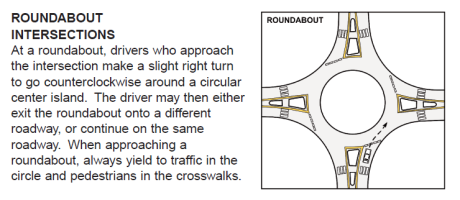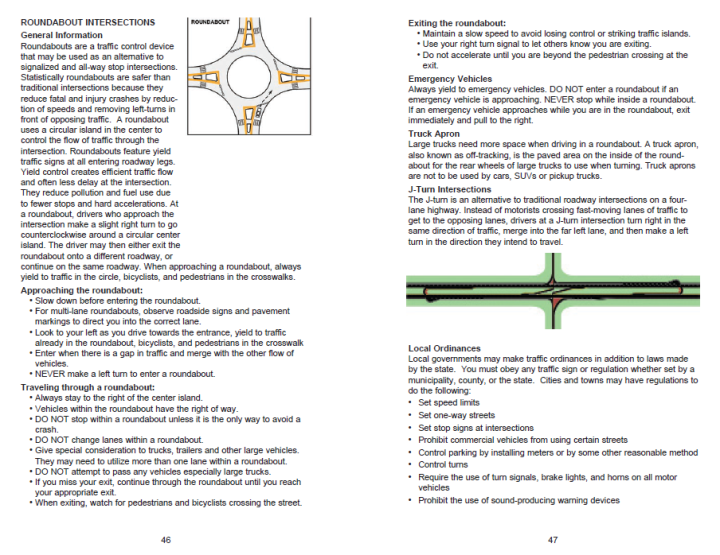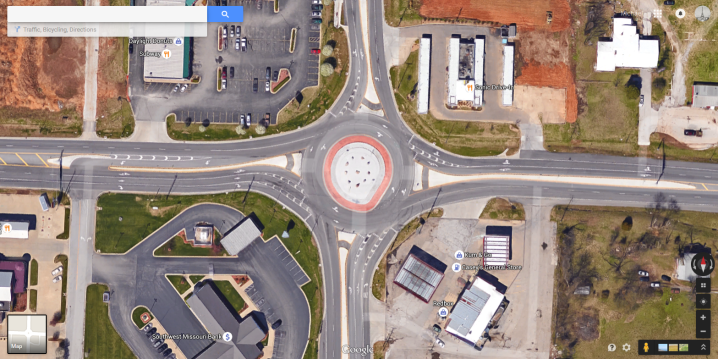You know, I never intended this blog to be a watchdog, activist, whine fest. After I finish this series, I need to find something positive to write about. Anyway…
In my last post, I detailed that accidents at Stones Corner have more than doubled since the installation of a multi-lane roundabout at the intersection to replace a traditional traffic signal. To be fair, the intersection has been a problem for many years. I know. I grew up around here and have lived in my current location since 1998. I’ve seen the intersection redesigned multiple times, and never have the engineers asked those who live in the area what needs to be fixed before designing their improvements. Solving one issue has created another each time.
What was the issue this time? Not accidents, presumably, as the rate and severity before the roundabout redesign seemed to be low. Traffic slowdowns seemed to be the major concern. I personally noted traffic backing up to the east during rush hour all the way to the airport many times. Often, I noted this while braking hard to avoid a collision, since the grade at that point doesn’t easily allow one to see that the traffic is at a standstill, and one wouldn’t expect this nearly half a mile from the traffic signal. I’m guessing that this problem is much alleviated (although adding a dedicated right-turn lane for those wishing to go north on 43 would have helped greatly, at much lass cost).
But folks have not become “used to” the roundabout. Or not enough of the folks have. Accidents have more than doubled. Ask anyone (seriously, anyone) who lives nearby to tell you some crazy stories. I believe the failure of this intersection to return to low accident rates has multiple causes. Some is due to poor design, some to poor signage, some to poor implementation, and some to unfamiliarity on the part of drivers (for which the state of Missouri also shares some of the blame). I will expand on each of these.
I. Unfamiliarity
Let’s start with the unfamiliarity. Roundabouts just aren’t common in the States. Folks didn’t grow up learning how to navigate them. They weren’t covered on my driver’s test (way back in the 1980’s). But one might assume that the Department of Revenue (which publishes the Driver Guide given to folks planning to get a Missouri drivers’ license) now has information about roundabouts. One would be correct, if one were interested only in single-lane roundabouts.
I was able to find and download four Missouri Driver Guides published from 2011 through 2014. As late as August 2014, the image below represented the entirety of the published information about how to drive a roundabout.
 The current November 2015 Driver Guide is a little better. However, more than two years after installation of two multi-lane roundabouts in the Joplin area, the Driver Guide has no help for you if you wish to learn how to navigate them. Here is an excerpt showing the entirety of the information it contains about roundabouts (click to enlarge):
The current November 2015 Driver Guide is a little better. However, more than two years after installation of two multi-lane roundabouts in the Joplin area, the Driver Guide has no help for you if you wish to learn how to navigate them. Here is an excerpt showing the entirety of the information it contains about roundabouts (click to enlarge):
 See anything about multi-lane roundabouts? Me neither. But at least the current Driver Guide is an improvement over the four earlier versions.
See anything about multi-lane roundabouts? Me neither. But at least the current Driver Guide is an improvement over the four earlier versions.
The Washington State Department of Transportation does a much better job of educating drivers in this regard. On their page How to Drive a Roundabout (which Google helped me find), one can find the following information:
Driving multi-lane roundabouts
 In a multi-lane roundabout, you will see two signs as you approach the intersection: The yellow “roundabout ahead” sign and a black-and-white “lane choice” sign. You will need to choose a lane prior to entering the roundabout.
In a multi-lane roundabout, you will see two signs as you approach the intersection: The yellow “roundabout ahead” sign and a black-and-white “lane choice” sign. You will need to choose a lane prior to entering the roundabout.
You choose your lane in a multi-lane roundabout the same way you would in a traditional multi-lane intersection. To go straight or right, get in the right lane. To go straight or left, get in the left lane. Drivers can also make U-turns from the left lane.
The graphics below show what turns can be made in multi-lane roundabouts. The arrows in yellow show the movements that can be made from the right lane, and the arrows in green show the movements that can be made from the left lane.
 |
 |
 |
 |
WsDOT even has a video that explains how to drive a roundabout. Unfortunately, Missouri does not seem to have adopted uniform lane choice signs such as the ones shown above and in the video.
II. Poor planning
The information from the Washington DOT about choosing a lane before entering is very good. Unfortunately, it doesn’t work at the Stones Corner roundabout, because only three of the four approaches have two lanes. Two of these two-lane approaches split into three as they approach the roundabout. The fourth approach has only one lane (which splits into two). And the lanes that are allowed to exit at various points depend on which direction one enters the roundabout from.
So here’s an open question: if you were designing an intersection style, at a major crossing of two state highways that had had numerous traffic control issues for decades—an intersection style that had not been used in your state in its entire history until a year or so previously—one which you knew the public was going to have difficulty adjusting to—one that people in the area had voiced their skepticism about—one that you were probably planning to use as a model for use elsewhere in the state {et cetera, et cetera}—wouldn’t you try to design it in as standard a way—as simple a way—as straightforward a way as possible? I believe you would. I certainly would. It would seem to be a no-brainer. But MoDOT chose to make a unique interchange. [Indeed, two unique interchanges—as the other roundabout on the same highway less than five miles east has a different nonstandard configuration.]
So, gentle driver, just ignore all those clear, thorough instructions from Washington DOT. They won’t help you here. Take a look at the aerial image below, and I’ll explain which lanes are allowed to go where.
 If you enter from either the north or the east, the right lane goes straight or right, and the left lane goes straight, left, or makes a U-turn. This is what is expected (according to WsDOT). (However, if you make a U-turn when coming from the north, you must change from the inside to the outside lane on the east side of the roundabout. This is confusing, and goes against the general rule to stay in your lane in the roundabout.)
If you enter from either the north or the east, the right lane goes straight or right, and the left lane goes straight, left, or makes a U-turn. This is what is expected (according to WsDOT). (However, if you make a U-turn when coming from the north, you must change from the inside to the outside lane on the east side of the roundabout. This is confusing, and goes against the general rule to stay in your lane in the roundabout.)
If you enter from the west, there is a dedicated right-turn-only lane. The center lane goes straight only. The left lane goes straight, left, or makes a U-turn.
Here’s where it gets crazy. If you enter from the south, there is a dedicated right-turn-only lane. The left lane goes only left, or makes a U-turn. You cannot go straight from the left lane. And unlike every other case, the center lane goes straight, left, or makes a U-turn. The main situation in which this is a problem is when a vehicle in the left lane attempts to go straight (as is allowed in all the other three directions) and crosses the path of a vehicle in the right lane attempting to turn left.
The other, not-so-obvious problem with this setup is that drivers learn that they can turn left from the right lane. Then they transfer this knowledge to a situation in which they enter from another direction. So, for example, a driver enters from the east in the right lane and proceeds to go past two exits to make a left turn—crossing the path of the driver in the left lane who intends to go straight (as I regularly witness).
My point here is that at this intersection there is no simple rule about which lanes are allowed to go where that applies from each direction. The roundabout could easily have been designed so that this would have been the case. I claim that this would have been the wise course of action, given the unfamiliarity of American drivers with navigating roundabouts in general.
You might claim that drivers can just follow the signs, or the lane markings on the roads. In fact, the road markings are little help, because they go by too fast to comprehend. And as for the signs, I will show that they actually do more harm than good. But since this post is getting awfully long, I think items III through V will have to wait for a fifth post.
You can get a preview of post #5 in the gallery comments below.
- Entering from the north. Seems clear enough—right turn lane and the left lane goes straight (north) or left (west).
- Now that we’re passing the lane markers (heading north), let’s look up at the signs.
- Wait—the left lane splits in two! The leftmost lane goes, um, north, and the center lane goes either north, or… north? Oops, I’m past the signs.
- Here we enter from the west. The right turn lane seems clear; south to Joplin. The center lane goes south to Webb City. OK… but wait! The left lane goes north or south to Bronaugh and Webb City. Wait; what?! Too late.
- If we examine the signs up close, do they make more sense?
- Here we are facing south, just west of the roundabout, between SMB Bank and Woody’s. Can we turn left here? There’s a left turn lane.
- But what’s with the “Road Closed” signs? Is that a 6″ curb there if I try to turn left? By golly, I think it is! Good thing it’s not dark out.
- Coming from the north there is only one lane…
- …that splits into two. The left lane goes south to Joplin or Webb City. The right goes south or north to Joplin or Carl Junction. Hmmm… What if I want to go to Sonic? Or Kum and Go?
- Guess I’ll try the left lane.
- Here we are entering from the east. For the record, the signs indicate that from the left lane, you can exit south on 43 or west on north171. From the right lane, you can exit north on 43 or west on north 171. Did you get all that? Well, it’s not actually all on the signs, but it’s true. Having the signs actually makes this intersection *more* confusing.
- Once we pass the signs, things make more sense, right? However, how many times have I seen a car in the right lane pass both legal exits to go south on 43?
- See the Missouri Highway Patrol car at Kum and Go? The officer stopped me as I was walking by with my camera. Ironically, he had been working an accident at the roundabout. “So, you hate it, too?” he said?
- For the record, this was taken on Nov 25, 2015, and the dangerous nonexistent left turn lane is still marked. When the Neighborhood Market opens, I predict many accidents here unless this gets fixed pronto.













